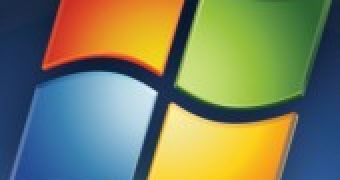Microsoft is tailoring the Natural User Interface of the next major iteration of Windows to form factors beyond mobile PCs (laptops, netbooks, etc.) and desktops. While in the United Kingdom on his European Tour last week, Microsoft Chief Executive Officer Steve Ballmer confirmed that the evolution of the NUI for Windows will mean that Windows 8 will be optimized to be touch-centric.
Ballmer was referring to the next generation of touch in Windows 8 in relation to slates/tablets, while noting that rivals to iPad from company OEM partners won’t really hit the market until 2011, according to the information provided by Mark Wilson.
The Windows 7 slates that Microsoft’s CEO promised would be delivered by the end of this year at the company’s annual Worldwide Partner Conference in mid-2010, have apparently been pushed back to 2011, and there are strategies built around the Windows Media Center component.
“Yeah, what you’ll see over the course of the next year is us doing more and more work with our hardware partners creating hardware-software optimizations with Windows 7 and with Windows 7 Media Center,” Ballmer said.
“Media Center is big and, when people say ‘hey, we could optimize more for clients’ I think what they generally mean is ‘Big Buttons’. Big Buttons that’s, I think, a codeword for Big Buttons and Media Center is Big Buttons not Little Buttons. I’m not trying to trivialize that – it’s a real issue.”
But users should not expect Windows 7, Windows 7 Service Pack 1 (SP1) or any other Windows 7 upgrade to be tailored to slates.
According to Ballmer, Microsoft’s work focused on tablet computers is focused on Windows 8.
“We’re not going to do a revamp of Windows 7 over the course of the next year for that purpose,” Ballmer explained.
“Whether we should, or we shouldn’t, we’ve put all our energy around doing a great job on that and other issues in the next version of Windows so we will do optimizations to have devices that look really good, that run Windows, that are very good for touch applications which we will encourage people to write."
“We will do things that improve - it turns out that if we just optimize settings and the configuration of Windows it can be a lot more usable through touch, even on today’s systems – we’re doing that work with the OEMs."
“We’re doing work with the OEMs to make sure that they treat ink also as a first class citizen. None of our competitors products actually do a very good job.”

 14 DAY TRIAL //
14 DAY TRIAL //